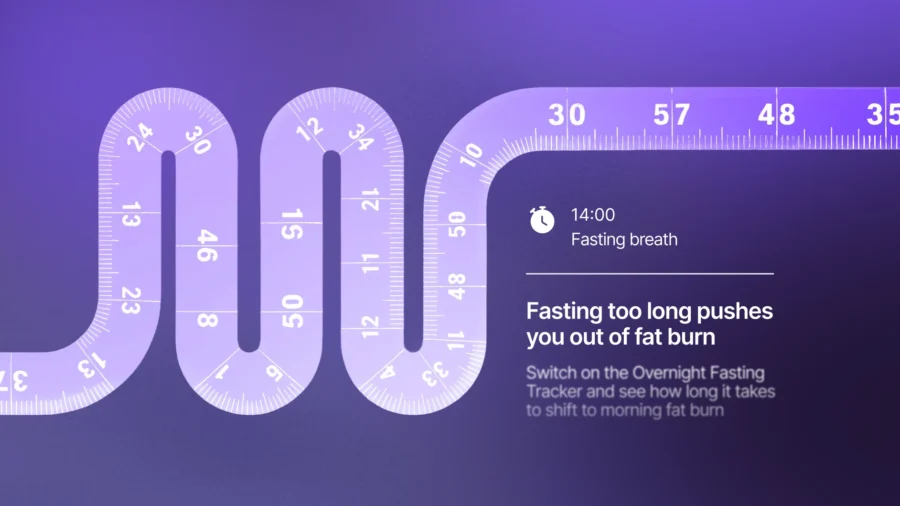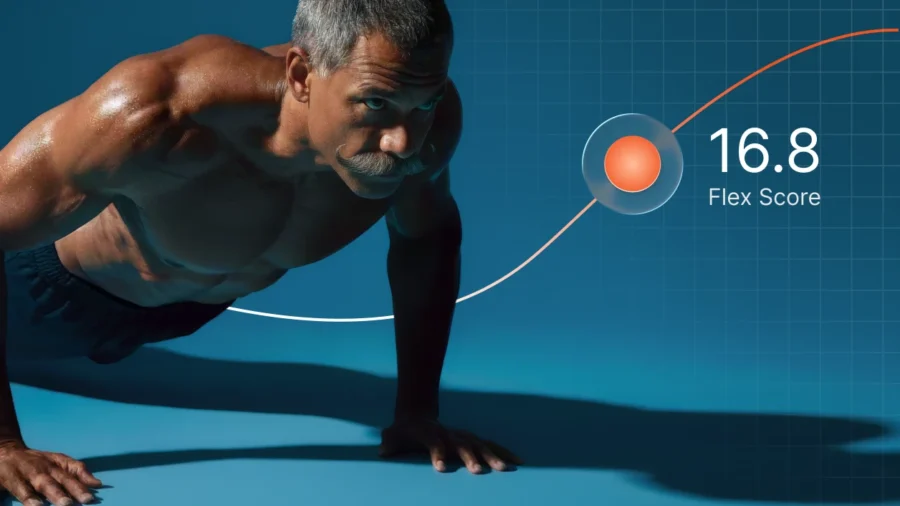Understanding the importance of muscle recovery after exercise

Have you ever wondered what really helps your muscles recover after a tough workout? Contrary to what you may think, recovery is just as important as the workout itself when it comes to performance, progress, and overall health. How well you recover can impact your gains, endurance, and ability to keep pushing your limits.
From proper post-workout nutrition to recovery techniques backed by science, we’ll break down what you need to know to help your muscles bounce back and perform at their best.
The importance of proper post-workout recovery
Engaging in physical exercise, particularly resistance and endurance training, induces microtrauma in muscle fibers. This microtrauma is essential for muscle adaptation and growth, but without adequate recovery, it can lead to overtraining, increased injury risk, and diminished performance.
Effective recovery restores physiological homeostasis, replenishes energy stores, repairs damaged tissues, and prepares the body for subsequent physical challenges. Research shows that efficient recovery enables athletes to train harder and respond more positively to training stimuli [1].
As Tony Horton, creator of P90X, emphasizes, “If you don't get the recovery and the rest part right, then you're never going to be able to be consistent with the fitness end of things.”
Recovering well after workouts is also integral to enhancing athletic performance and facilitating progressive overload, the gradual increase of stress placed upon the body during exercise training. Progressive overload is fundamental for achieving muscular adaptations such as hypertrophy (muscle growth) and strength gains [2]. Without sufficient recovery, the body cannot effectively respond to training stimuli, leading to stagnation or regression in performance. Research suggests that training adaptations leading to improved performance primarily occur during the recovery period after fatiguing exercise or training [3].
Why build and preserve muscle mass?
Maintaining and building muscle isn’t just about strength or aesthetics, it plays a key role in overall health, functional movement, and metabolic efficiency.
This is because muscle tissue serves as the principal reservoir for amino acids, supporting protein synthesis in vital organs and contributing to metabolic health [4].
Your muscles are also packed with mitochondria, your cells’ powerhouses, and house most of your glycogen. This means the more muscle mass you gain, the more mitochondria and glycogen stores you’ll have. As a result, your muscles can efficiently use carbs when you need an energy boost, ensuring less glucose is stored as fat. It also helps your mitochondria better metabolize fat at rest or during low-intensity activities.
As we age, muscle mass naturally declines, a condition known as sarcopenia, which can lead to decreased strength, mobility issues, and a higher risk of chronic diseases [5]. This is why strength training is especially beneficial for older adults, helping to maintain muscle mass and improve mobility. A well-rounded diet that includes adequate protein intake supports muscle repair and hypertrophy. Health experts recommend consuming 0.8 grams of protein per kilogram of body weight daily to promote muscle growth [6].
A guide to post-workout nutrition
Now that we understand the importance of muscle recovery and its role in preserving and building muscle mass, it's time to focus on one of the most crucial recovery factors: nutrition.
Consuming a combination of carbohydrates and proteins post-exercise is crucial for replenishing glycogen stores and facilitating muscle protein synthesis (MPS). Research suggests that ingesting protein after exercise may suppress the rise in plasma proteins linked to myofibrillar damage and reduce muscle soreness [7]. When it comes to creating a proper diet for workout performance and recovery, it’s important to find a balance that supports your energy needs and recovery. This means focusing on nutrient-dense meals that provide the right amount of protein, healthy fats, and carbohydrates to fuel your workouts and optimize muscle repair.
Micronutrients that support recovery
In addition to a balanced diet made up of all key macronutrients, certain micronutrients may further optimize recovery. Several nutrients have been investigated for their potential to enhance post-exercise recovery [8]. Let’s take a look at a few:
Coenzyme Q10 (CoQ10)
CoQ10 is a powerful antioxidant that supports mitochondrial function and helps reduce oxidative stress caused by exercise. During intense physical activity, mitochondria produce energy, but this process also generates reactive oxygen species (ROS), which can lead to muscle fatigue and damage [9].
CoQ10 plays a crucial role in neutralizing these free radicals while supporting ATP production, aiding in muscle recovery and overall endurance. Studies show that CoQ10 may reduce exercise-induced muscle damage, improve power output, and alleviate post-workout soreness. Natural sources of CoQ10 include fatty fish, spinach, nuts, and cauliflower, which help protect mitochondria from oxidative stress and support recovery.
Magnesium
Magnesium is vital for muscle relaxation and nerve function. Adequate magnesium intake has been associated with improved muscle function and reduced cramps, potentially aiding recovery [10]. In addition to supporting your workouts, magnesium plays a key role in improving sleep quality, which is essential for muscle repair and overall recovery.
Electrolytes
Electrolytes such as sodium, potassium, and calcium are essential for maintaining fluid balance and muscle function [11]. Replenishing electrolytes post-exercise can prevent dehydration and muscle cramps, facilitating recovery.
Glutamine
Glutamine is an amino acid that supports immune function and gut health. While its direct impact on muscle recovery is still under investigation, glutamine may help maintain immune function after intense exercise [12]. This is especially helpful for ultra-endurance athletes, since very long, intense exercise can depress immune defenses.
Glycine
Glycine is involved in collagen synthesis and may improve sleep quality, both of which are important for recovery. Several clinical studies have shown that taking glycine can decrease sleep onset time and improve subjective sleep quality, meaning people report feeling they slept deeper or better [13,14].

Other strategies that support muscle repair
Beyond nutritional interventions, here are some key strategies our Lumen experts recommend, starting from the most basic tools to some more advanced options.
Basic strategies
- Stretching: Post-exercise stretching can enhance flexibility and reduce muscle stiffness. While the impact of stretching on delayed onset muscle soreness (DOMS) is debated, it may promote relaxation and improve range of motion.
- Foam rolling: Foam rolling, a form of self-myofascial release, has been shown to reduce muscle soreness and improve joint range of motion [15]. It is believed to enhance blood flow and alleviate muscle tightness.
- Quality sleep: During sleep, the body releases growth hormone, stimulating insulin-like growth factor hormone (IGF-1), which helps repair microtears in muscle fibers caused by exercise [16]. Sleep also supports protein synthesis, which is vital for muscle repair and growth [17].

Intermediate strategies
- Massage: Massage therapy is effective in reducing DOMS and perceived fatigue. It enhances blood circulation, reduces muscle tension, and promotes relaxation, contributing to faster recovery [18].
- Contrast therapy (Hot/Cold): Alternating between hot and cold treatments may reduce muscle soreness and inflammation [18]. This method is thought to improve circulation and expedite the removal of metabolic waste products.
Cold water immersion and cryotherapy have been studied for their effects on reducing muscle soreness and inflammation [18]. Cold water immersion, in particular, has been demonstrated to be an effective post-exercise recovery method. - Compression: Wearing compression tights post-exercise can help manage perceived fatigue. They are believed to enhance venous return and reduce muscle swelling, aiding recovery [18].

Advanced strategies
- Red light therapy: Red light therapy, or photobiomodulation, involves using low-level laser therapy to stimulate cellular function. Some studies suggest it may increase muscle mass after training, decrease inflammation, and decrease oxidative stress [19].
- Infrared PEMF mat: Pulsed Electromagnetic Field (PEMF) therapy uses electromagnetic fields to influence cellular behavior. Some evidence indicates potential benefits for reducing pain[20].
- Hyperbaric oxygen chamber (HBOT): Hyperbaric oxygen therapy involves breathing pure oxygen in a pressurized environment, increasing oxygen availability to tissues. This method has shown promise in enhancing recovery from muscle injuries [21].
Optimizing workout recovery with Lumen
Measuring your metabolism with Lumen’s pre-workout and post-workout breaths is another way to gain valuable insights into how your body utilizes fuel, allowing you to tailor your nutrition and training for maximum efficiency.
By understanding whether you are burning carbohydrates or fats at different stages of your workout, you can optimize energy availability, prevent muscle breakdown, and enhance recovery. Here’s how it works:
Pre and post-workout metabolic measurements
Take a pre-workout breath measurement to determine if you should fuel up before your high-intensity workout. If you’re burning fat, that’s a sign your glycogen stores are low, and you should eat a fast-digesting carbohydrate source like a banana to avoid muscle breakdown.
Take a metabolic measurement again 30–45 minutes following your workout, after your heart rate has stabilized. This measurement gauges how intense your exercise was and how well your body is recovering.
During high-intensity workouts like sprinting or weightlifting, your mitochondria rely on carbs for a quick and powerful energy boost. Afterward, your body enters a recovery phase, replenishing glycogen stores and repairing muscle tissue. During this time, it burns mostly carbs.
Once you’ve shifted to fat burn, it means recovery is complete. A longer shift back to fat burn means you had an intense workout.
Recover smarter
Taking care of your muscles is key to hitting your fitness goals and staying healthy. By focusing on measuring your metabolism, balanced nutrition and smart recovery practices, you’re helping your muscles heal and grow while keeping the risk of injury low and boosting your performance. Making recovery a core part of your routine is essential for long-term progress and overall well-being.
References
- Caballero-García, A., & Córdova-Martínez, A. (2022). Muscle Recovery and Nutrition. Nutrients, 14(12), 2416. https://doi.org/10.3390/nu14122416
- Plotkin, D., Coleman, M., Van Every, D., Maldonado, J., Oberlin, D., Israetel, M., Feather, J., Alto, A., Vigotsky, A. D., & Schoenfeld, B. J. (2022). Progressive overload without progressing load? The effects of load or repetition progression on muscular adaptations. PeerJ, 10, e14142. https://doi.org/10.7717/peerj.14142
- Bishop PA, Jones E, Woods AK. Recovery from training: a brief review: brief review. J Strength Cond Res. 2008 May;22(3):1015-24. doi: 10.1519/JSC.0b013e31816eb518. PMID: 18438210.
- Wolfe, R. R. (2006). The underappreciated role of muscle in health and disease. The American Journal of Clinical Nutrition, 84(3), 475-482. https://doi.org/10.1093/ajcn/84.3.475
- Larsson, L., Degens, H., Li, M., Salviati, L., Lee, Y. I., Thompson, W., Kirkland, J. L., & Sandri, M. (2019). Sarcopenia: Aging-Related Loss of Muscle Mass and Function. Physiological reviews, 99(1), 427–511. https://doi.org/10.1152/physrev.00061.2017
- Lonnie, M., Hooker, E., Brunstrom, J. M., Corfe, B. M., Green, M. A., Watson, A. W., Williams, E. A., Stevenson, E. J., Penson, S., & Johnstone, A. M. (2018). Protein for Life: Review of Optimal Protein Intake, Sustainable Dietary Sources and the Effect on Appetite in Ageing Adults. Nutrients, 10(3), 360. https://doi.org/10.3390/nu10030360
- Jäger, R., Kerksick, C.M., Campbell, B.I. et al. International Society of Sports Nutrition Position Stand: protein and exercise. J Int Soc Sports Nutr 14, 20 (2017). https://doi.org/10.1186/s12970-017-0177-8
- O’Connor, E., Mündel, T., & Barnes, M. J. (2022). Nutritional Compounds to Improve Post-Exercise Recovery. Nutrients, 14(23), 5069. https://doi.org/10.3390/nu14235069
- Hidalgo-Gutiérrez, A., González-García, P., Díaz-Casado, M. E., Barriocanal-Casado, E., López-Herrador, S., Quinzii, C. M., & López, L. C. (2021). Metabolic Targets of Coenzyme Q10 in Mitochondria. Antioxidants (Basel, Switzerland), 10(4), 520. https://doi.org/10.3390/antiox10040520
- Liguori, S., Moretti, A., Paoletta, M., Gimigliano, F., & Iolascon, G. (2024). Role of Magnesium in Skeletal Muscle Health and Neuromuscular Diseases: A Scoping Review. International journal of molecular sciences, 25(20), 11220. https://doi.org/10.3390/ijms252011220
- Shrimanker I, Bhattarai S. Electrolytes. [Updated 2023 Jul 24]. In: StatPearls [Internet]. Treasure Island (FL): StatPearls Publishing; 2025 Jan-. Available from: https://www.ncbi.nlm.nih.gov/books/NBK541123/
- Cruzat, V., Macedo Rogero, M., Noel Keane, K., Curi, R., & Newsholme, P. (2018). Glutamine: Metabolism and Immune Function, Supplementation and Clinical Translation. Nutrients, 10(11), 1564. https://doi.org/10.3390/nu10111564
- YAMADERA, W., INAGAWA, K., CHIBA, S., BANNAI, M., TAKAHASHI, M., & NAKAYAMA, K. (2007). Glycine ingestion improves subjective sleep quality in human volunteers, correlating with polysomnographic changes. Sleep and Biological Rhythms, 5(2), 126–131. https://doi.org/10.1111/j.1479-8425.2007.00262.x
- INAGAWA, K., HIRAOKA, T., KOHDA, T., YAMADERA, W., & TAKAHASHI, M. (2006). Subjective effects of glycine ingestion before bedtime on sleep quality. Sleep and Biological Rhythms, 4(1), 75–77. https://doi.org/10.1111/j.1479-8425.2006.00193.x
- Wiewelhove, T., Döweling, A., Schneider, C., Hottenrott, L., Meyer, T., Kellmann, M., Pfeiffer, M., & Ferrauti, A. (2019). A Meta-Analysis of the Effects of Foam Rolling on Performance and Recovery. Frontiers in physiology, 10, 376. https://doi.org/10.3389/fphys.2019.00376
- Ahmad, S. S., Ahmad, K., Lee, E. J., Lee, Y. H., & Choi, I. (2020). Implications of Insulin-Like Growth Factor-1 in Skeletal Muscle and Various Diseases. Cells, 9(8), 1773. https://doi.org/10.3390/cells9081773
- Lamon, S., Morabito, A., Arentson-Lantz, E., Knowles, O., Vincent, G. E., Condo, D., Alexander, S. E., Garnham, A., Paddon-Jones, D., & Aisbett, B. (2021). The effect of acute sleep deprivation on skeletal muscle protein synthesis and the hormonal environment. Physiological reports, 9(1), e14660. https://doi.org/10.14814/phy2.14660
- Dupuy, O., Douzi, W., Theurot, D., Bosquet, L., & Dugué, B. (2018). An Evidence-Based Approach for Choosing Post-exercise Recovery Techniques to Reduce Markers of Muscle Damage, Soreness, Fatigue, and Inflammation: A Systematic Review With Meta-Analysis. Frontiers in physiology, 9, 403. https://doi.org/10.3389/fphys.2018.00403
- Ferraresi, C., Huang, Y. Y., & Hamblin, M. R. (2016). Photobiomodulation in human muscle tissue: an advantage in sports performance?. Journal of biophotonics, 9(11-12), 1273–1299. https://doi.org/10.1002/jbio.201600176
- Trofè, A., Piras, A., Muehsam, D., Meoni, A., Campa, F., Toselli, S., & Raffi, M. (2023). Effect of Pulsed Electromagnetic Fields (PEMFs) on Muscular Activation during Cycling: A Single-Blind Controlled Pilot Study. Healthcare (Basel, Switzerland), 11(6), 922. https://doi.org/10.3390/healthcare11060922
- Chen, C. Y., Chou, W. Y., Ko, J. Y., Lee, M. S., & Wu, R. W. (2019). Early Recovery of Exercise-Related Muscular Injury by HBOT. BioMed research international, 2019, 6289380. https://doi.org/10.1155/2019/6289380







 Digital download
Digital download 


